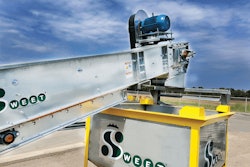
Remember last Spring when everyone began hoarding toilet paper? It was like winning the lottery if you could get your hands on an economy pack. My local parenting groups on Facebook were flooded with tips on which stores had TP in stock online or in-person and what day and time delivery trucks would arrive at big box stores. You would score bonus points for being able to find disinfecting wipes and paper towels at the same location.
Looking back, the toilet paper shortage was one of the more comical consequences of the COVID-19 pandemic. Unfortunately, that ordeal was just the tip of the iceberg of supply chain woes that are still rocking every facet of the industry in the United States, and the entire world, today.
Fast forward to 2021, and those household stockpiles of paper goods have contributed to a shortage of the very paper used to print this magazine. Car manufacturers have halted production due to a shortage of computer chips. Heavy equipment manufacturers face steel shortages, lengthening lead time on orders and increasing the cost of production on everything from conveying equipment to steel bins to scales, mixers and milling equipment.
In an unwelcome blow to grain exporters, the global trade upheaval resulted in a backlog of container ships waiting to unload at the West Coast’s largest ports, including Los Angeles, Long Beach and Oakland. The subsequent shortage of containers has many companies worried about their ability to ship grain by this year’s harvest.
Access to export containers has been limited by skyrocketing shipping costs and surcharges, making it challenging for U.S. grain exporters and producers to fulfill overseas contracts. American Farm Bureau Federation economists estimate the total loss in agricultural exports could reach $1.5 billion. If the issue is not addressed, it may negatively impact future trade agreements with trading partners across the globe.
Addressing problems with the supply chain is crucial to the United States’ ability to lead the way as a dominant force in grain exports. U.S. agriculture groups are urging Congress to improve the situation and alleviate port bottlenecks. Things like extending operating hours for U.S. ports and preventing unreasonable financial penalties for exporters would both be steps in the right direction.
Let’s hope for sound legislation and better policies to help fix the shortages impacting the grain and feed industries. ■

















